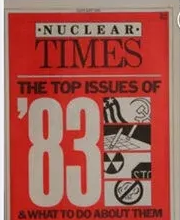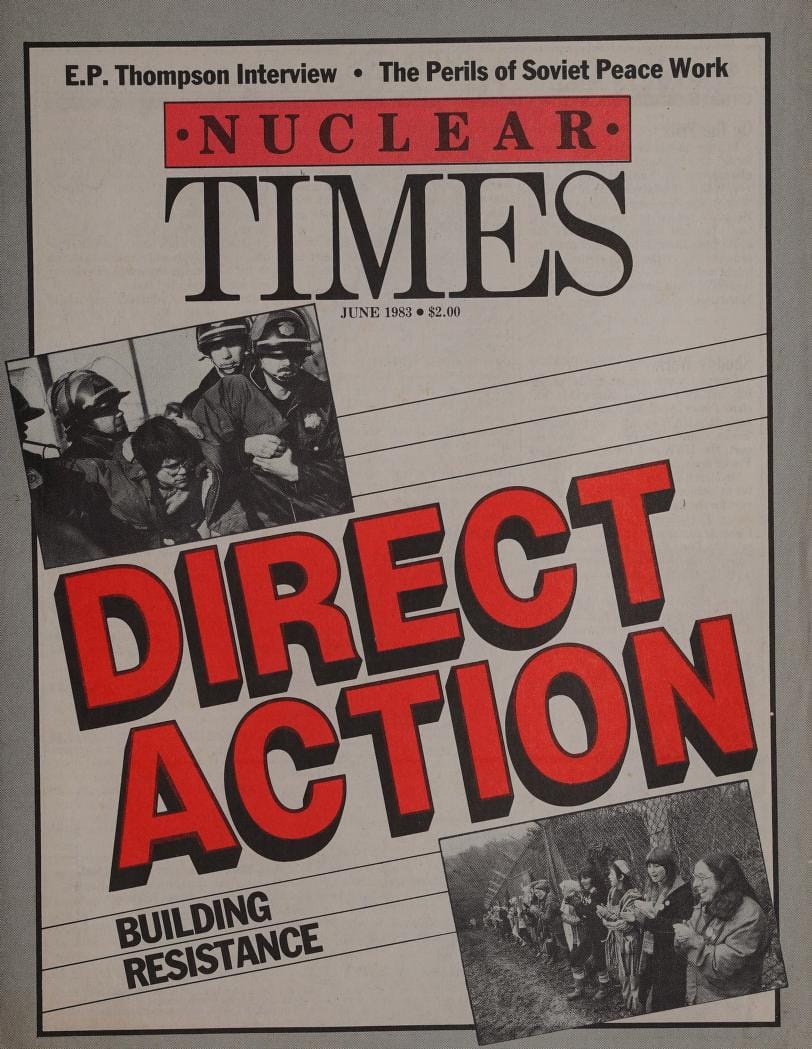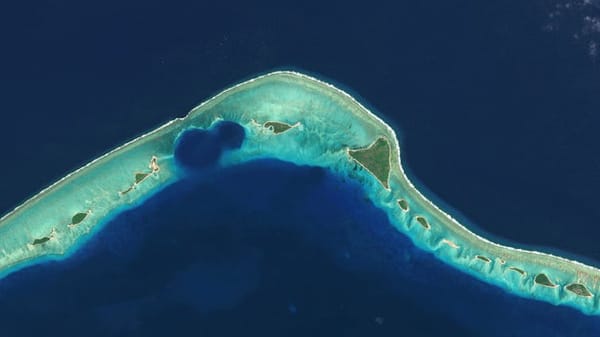These Are Still Nuclear Times
Historian Henry Richard Maar III for Nuclear Times: “The entwined history of arms control and peace activism should remind us—we can stop and turn the clock back.”
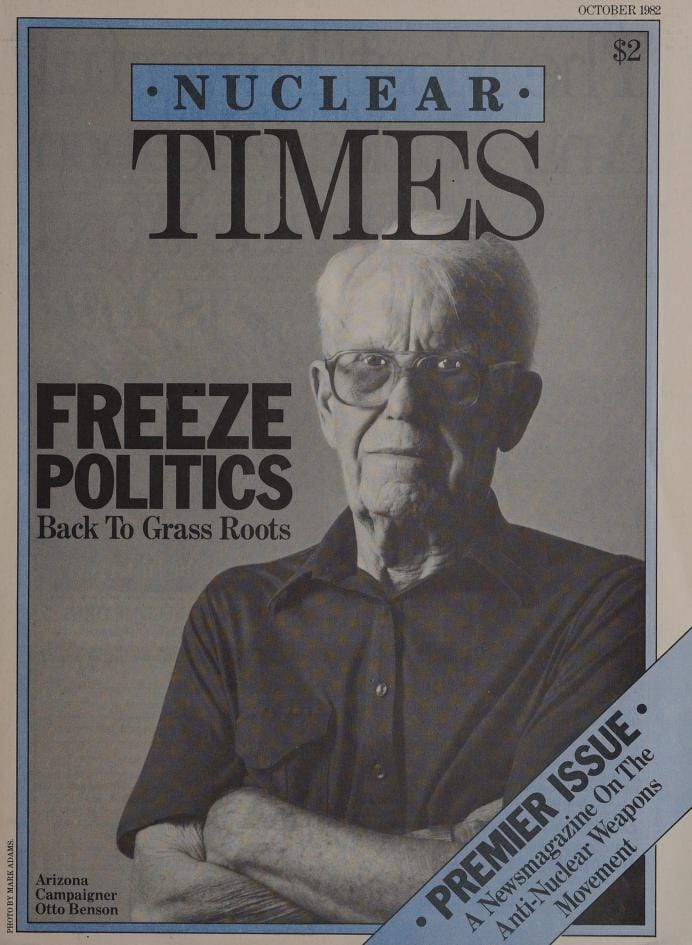
By Henry Richard Maar III.
Read FREEZE! The Grassroots Movement to Halt the Arms Race and End the Cold War
In the early 1980s, the Cold War was red hot. The Soviets were on the march in Afghanistan. The United States, though still scarred from its imperial war in Vietnam, moved to a more confrontational approach in foreign affairs marked by the 1980 election of President Ronald Reagan. Superpower arms control summitry was replaced with a push for new first-strike weapons and loose talk of winnable and survivable nuclear war. Fear of a nuclear apocalypse stretched across the globe. An estimated 1million people took to the streets in New York City while millions more spoke out to put an end to the nuclear madness. In an age of no social medial, blog posts, text messages, and no 24-hour news cycle, one organ helped drive the news of the antinuclear movement: Nuclear Times.
Help us relaunch the magazine for nuclear disarmament.
Like a bolt of lightning from the sky, Nuclear Times appeared as a monthly newsmagazine in October 1982. Proclaiming in its opening pages, “these are nuclear times,” it would feature the voices of many of the major figures involved in the antinuclear movement and the world of arms control and disarmament more broadly.

One could find scholars such as Fred Kaplan alongside activists such as SANE’s David Cortright and Freeze’s Randy Kehler as well as END’s Mary Kaldor and others representing the various strands of the global disarmament movement.
There were rich articles about not just global issues (such as the impending Euromissile crisis in the fall of 1983), but also local and regional actions. When the United States Conference of Catholic Bishops debated their pastoral letter criticizing the arms race (“The Challenge of Peace”), Nuclear Times was there to provide coverage of the letter—and to critique its final draft.
Someone looking for connections between the antinuclear movement and popular culture could find articles about concerts and celebrity involvement (such as actor Paul Newman’s direct involvement in the 1982 California Nuclear Weapons Freeze ballot referendum). Cold War scholars looking at the link between the Cold War and film would find extensive coverage of ABC’s made-for-TV movie, The Day After as well as reviews and articles about major nuclear themed films such as WarGames.
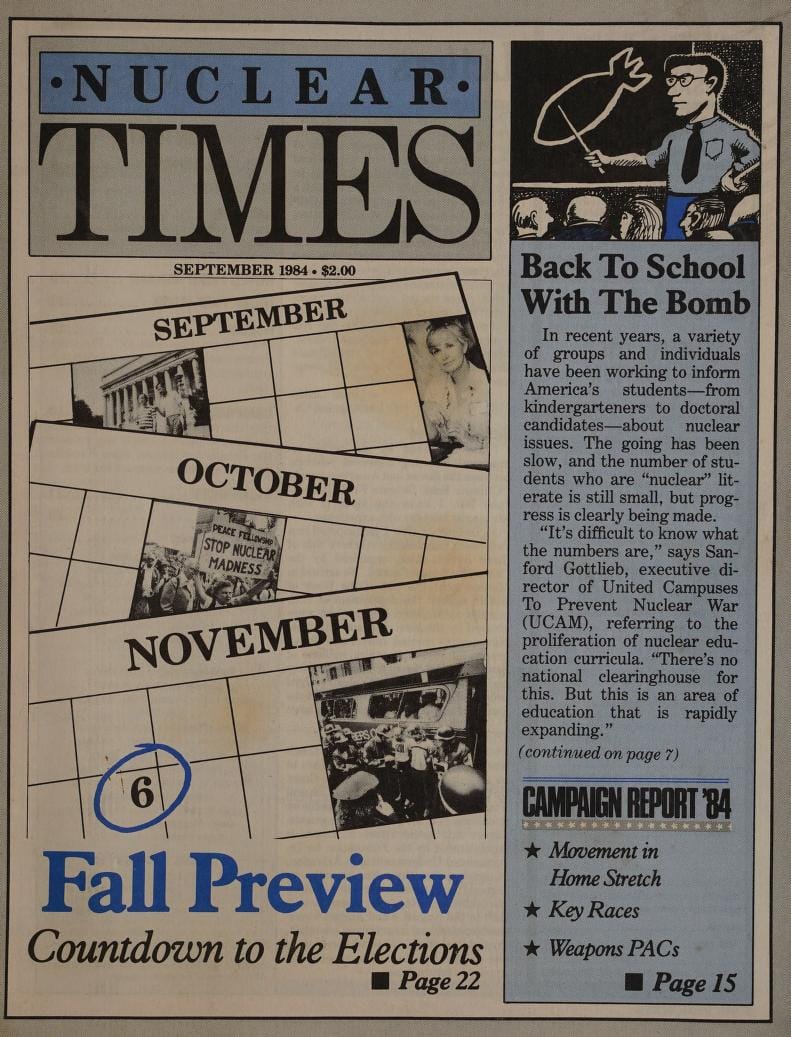
As the antinuclear movement faced a pivotal moment with the 1984 presidential election, Nuclear Times provided a window into the various strands of the movement and the challenges it faced in opposing President Reagan’s re-election campaign but more reluctantly supporting the Democratic presidential nominee, Walter Mondale.
For scholars such as myself looking for sources from the period, Nuclear Times went beyond the memoirs of David Cortright and Pam Solo. It offered more than a reflection of the 1980’s antinuclear movement, but a day-in, day-out accounting. It remains a crucial source for any historian writing about the nuclear disarmament movement of the era specifically or for those simply looking to gain insights into peace activism and the culture of the late Cold War more broadly.
The return of Nuclear Times should be welcomed and embraced by the various strands of the contemporary antinuclear world. It is an excellent opportunity to once again unite the voices from the various strands of the disarmament movement, to connect those with policy backgrounds to the passionate activists seeking to make the world a saner place.
Yet, its return should also be a cautious reminder: Nuclear Times initially stopped publication in 1992 because the threat of a US-Soviet nuclear showdown that drove its initial publication appeared to be waning. Indeed, even Ronald Reagan was sounding like a changed man. Standing next to Soviet General Secretary Mikhail Gorbachev in Moscow’s Red Square, Reagan told reporters that his 1983 remarks calling the Soviet Union an “Evil Empire” were from “another time, another era.”
The world of 2025 is perhaps even more menacing than the dread that galvanized 1980’s antinuclear activism. Vladmir Putin’s war on Ukraine stretches now into its third year, while Israel’s genocidal campaign on Gaza continues to escalate. The growth of Artificial Intelligence, shoved down our throats by private billion-dollar tech companies, fuels AI psychosis and the spread of disinformation, all while accelerating climate change. While our culture war continues to stew, the United States under President Donald Trump grows more authoritarian daily. Meanwhile, the nuclear threat that never actually went away has returned.
In recent years, the United States and Russia have abandoned the arms control treaties of the Cold War that signaled at least some progress to arrest the growth of nuclear arsenals. Despite delays and increasing costs, the United States Air Force continues to fund the Sentinel ICBM as a replacement for the aging Minuteman III.
In 1983, the Doomsday Clock of the Bulletin of the Atomic Scientists came within 3 minutes to midnight (potential Armageddon). Today the clock is set at 89 seconds to midnight. While doomsday encroaches with ever rapidity, the entwined history of arms control and peace activism should remind us—we can stop and turn the clock back.
Our modern world is now replete with cellular phones and social media platforms that allow us to connect and share thoughts instantly. But Nuclear Times can become that central hub that documents actions, spreads word of campaigns, and brings policymakers and activists alike together in conversation on stopping a new arms race. Reflecting on the nuclear nightmare the world faced in 1982, Nuclear Times’ first editor, journalist Phil Standford, optimistically reminded us, “People, not impersonal forces of history, got us into this fix—and enough of the right people can get us out.”
Henry Richard Maar III is a modern US historian and the author of FREEZE! The Grassroots Movement to Halt the Arms Race and End the Cold War (Cornell University Press, 2021).
Follow Nuclear Times on Bluesky
